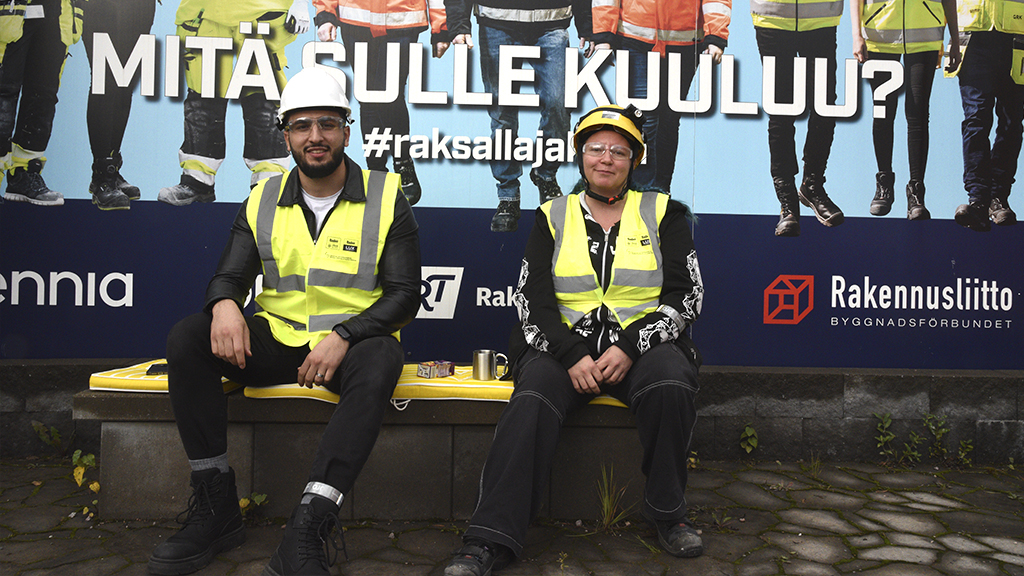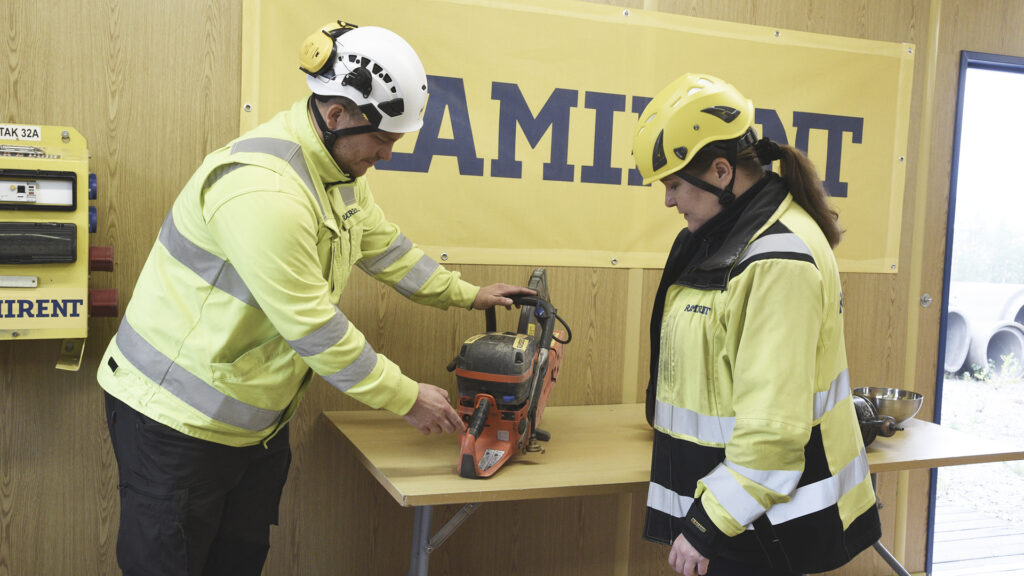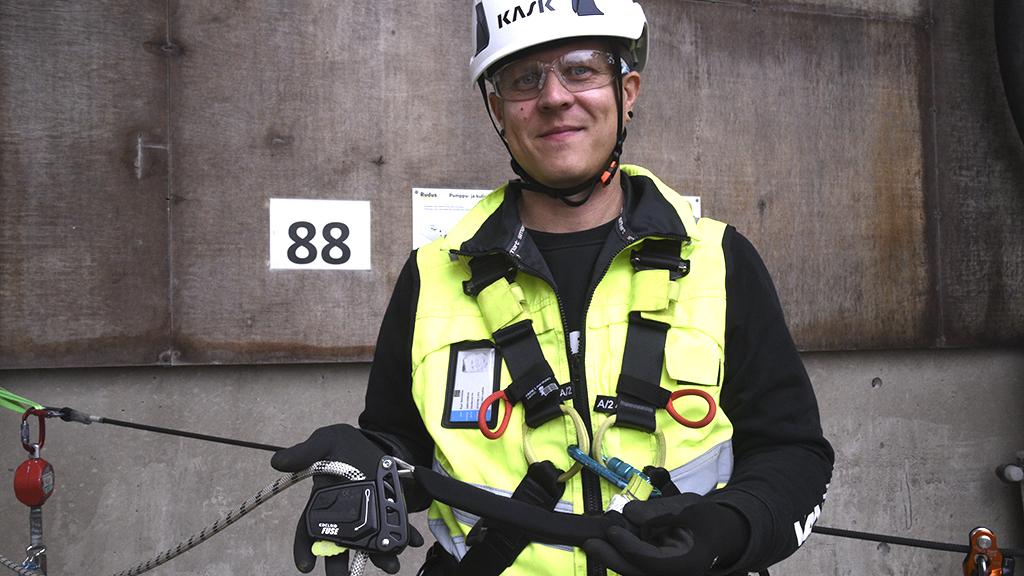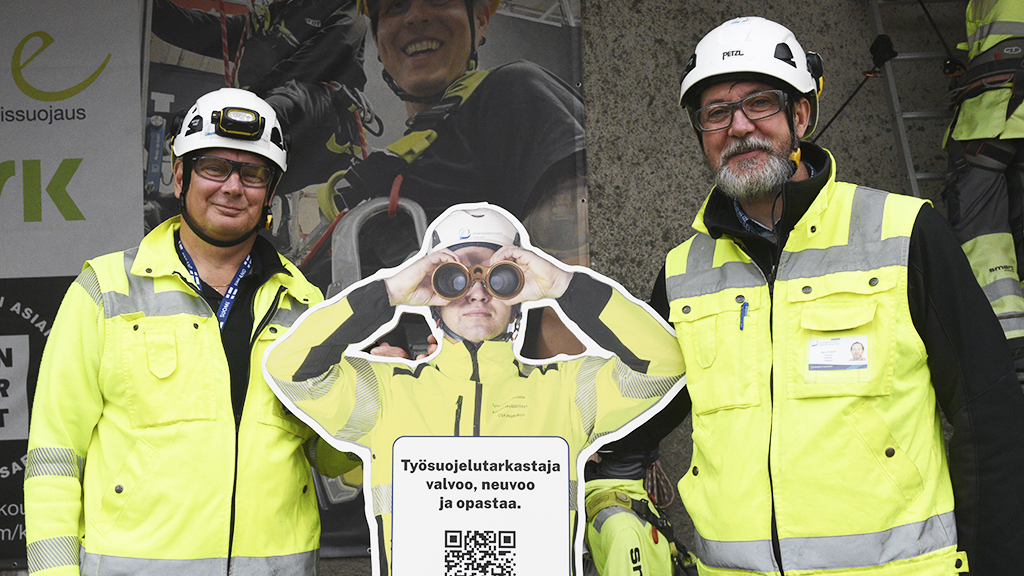This autumn, 500 students from universities of applied sciences once again toured security checkpoints in Espoo's Rudus security park. Staff from RT's member companies and partners provided guidance at the checkpoints.

One of the students who toured the safety park on the day of the Norwegian Academy of Science and Technology was Kati Kettkangas Tampere University of Applied Sciences from TAMK. Kat is currently in her third year of study as a civil engineering student in the field of Infrastructure. The field is familiar, because before her studies, Kati had time to work in buildings for nine years, for example as a building cleaner, pipe fitter and insulator. "Then I thought about studying a little higher, when this field interests me", he sighs.
Kati was in the safety park for the first time and thought the dreadlocks were really good when they highlight concrete things. At the end, the students who crossed the lines could fill in the "Test what you learned" survey. Kat had memorized the lesson well during the round and answered quickly
And what does the former construction cleaner want to do right after graduating from ins? "Railway and road construction are interesting because they are in the worst condition and there is plenty of work," he laughs. What came to my mind from the tour was that, while before the focus in safety was on physical characteristics, more attention has now begun to be paid to the psychological factors of occupational well-being.
Kat's course friend from TAMK was also there Ahmad Aboukhers. Public interest in construction and the infrastructure sector drew Ahmadia to the field of infrastructure construction. After graduation, he wants to do bridge construction work.

We also think of others
There are electric hand tools on the table. "What's wrong with this," Ramirent's training coordinator Nina Civil guess the bystanders. We are at Ramirent's checkpoint in the security park, and this time there are twenty students at the checkpoint. The discussion about the maintenance and faults of work machines and equipment gets off to a lively start. There are faulty wires, loose parts, missing guards.

"These are typical tunings from real life. All machines have returned to us in this condition. People have taken the guards off, the buttons have been tuned to the bottom so that it starts straight away, or the nailer has been tuned to fire all the time. Tuning is common, someone always wants to be faster than others. Is it possible to understand that at the same time a person endangers his own safety and that of others", Civil ponders.
The purpose of the cross is to teach that it is worth sticking to the daily inspections of electrical equipment, and that a faulty electrical machine can be deadly.
Harness safety is also checked. One of the example harnesses has the owner's name written in marker. That's enough to make it a wreck.
"Paints and various chemicals corrode the material of the harness, and such a harness must no longer be used," Ramirent's director of electrical work instructs the students Aku Kavén. For even the slightest fraying, the employer must change the harness, he advises. Ramirent also provides different card training, of which the personal lift card is still unknown to many. It's also worth knowing, because in some workplaces you can't even drive a personal lift without it.
According to both trainers, the students are quite good at figuring out the shortcomings or defects in the devices. "We make them look for them themselves in a safe way, that's the best way to learn and remember," they say.
Fall protection is a genre of its own
When fall protection cannot be implemented by other means, a safety harness is the best way. Vandernet's check mark for drop protection Pasi Halmisto had the students guess how much load the anchor point of the harness should withstand? Or how long can a person hang in the harness before unconsciousness threatens? The correct answers were 1200 kilos and 2–12 minutes, so no students were let in easily. On construction sites, it is necessary to practice how a person rescued by a harness can be lifted out of the harness in time.

Safety is a common issue and the annual vocational school day is organized by Proliitto, TTK, RT and AVI in cooperation. The Regional Administration received a lot of questions about working conditions and the best way to get in touch with AVI, say the tickers Manu Kivisaari ja Kari Härkönen.
"AVI's operation was still not very familiar to the students. There are future experts from many different fields here, we have asked each group what they are studying and we try to give them key information for their field. A guiding, guiding and advising authority, that's the image we want to convey to the students here. And that you should contact us at a low threshold. Everyone here is on the move with a good attitude."
